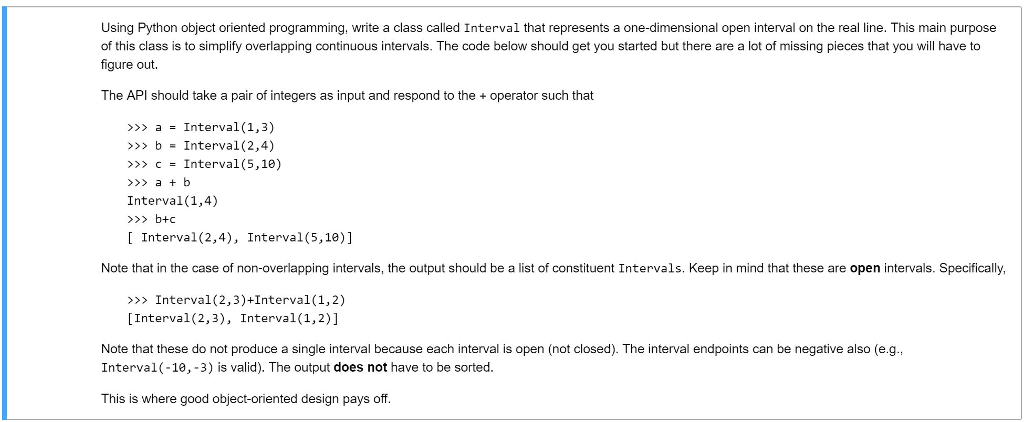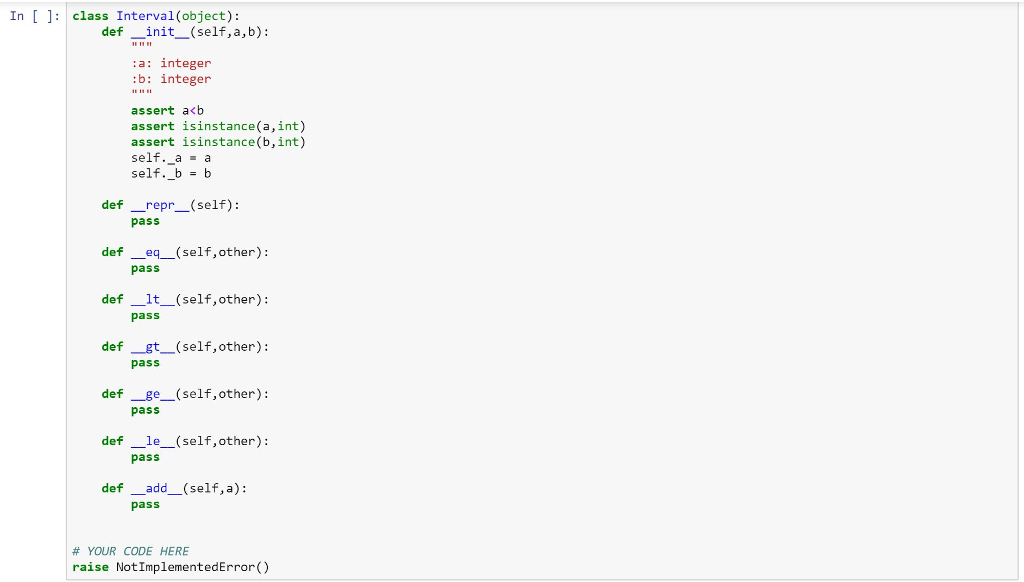Answered step by step
Verified Expert Solution
Question
1 Approved Answer
Using Python object oriented programming, write a class called Interval that represents a one-dimensional open interval on the real line. This main purpose of this
Using Python object oriented programming, write a class called Interval that represents a one-dimensional open interval on the real line. This main purpose of this class is to simplify overlapping continuous intervals.


This is all of the given information.
Using Python object oriented programming, write a class called Interval that represents a one-dimensional open interval on the real line. This main purpose of this class is to simplify overlapping continuous intervals. The code below should get you started but there are a lot of missing pieces that you will have to figure out. The API should take a pair of integers as input and respond to theoperator such that >>> a = Interval(1,3) >>>bInterval (2,4) >Interval(5,1e) >>>ab Interval(1,4) >> b+c Interval(2,4), Interval(5, 10)] Note that in the case of non-overlapping intervals, the output should be a list of constituent Intervals. Keep in mind that these are open intervals. Specifically >Interval(2,3)+Interval(1,2) [Interval (2,3), Interval(1,2)] Note that these do not produce a single interval because each interval is open (not closed). The interval endpoints can be negative also (e.g. Interval(-10,-3) is valid). The output does not have to be sorted. This is where good object-oriented design pays off. Using Python object oriented programming, write a class called Interval that represents a one-dimensional open interval on the real line. This main purpose of this class is to simplify overlapping continuous intervals. The code below should get you started but there are a lot of missing pieces that you will have to figure out. The API should take a pair of integers as input and respond to theoperator such that >>> a = Interval(1,3) >>>bInterval (2,4) >Interval(5,1e) >>>ab Interval(1,4) >> b+c Interval(2,4), Interval(5, 10)] Note that in the case of non-overlapping intervals, the output should be a list of constituent Intervals. Keep in mind that these are open intervals. Specifically >Interval(2,3)+Interval(1,2) [Interval (2,3), Interval(1,2)] Note that these do not produce a single interval because each interval is open (not closed). The interval endpoints can be negative also (e.g. Interval(-10,-3) is valid). The output does not have to be sorted. This is where good object-oriented design pays offStep by Step Solution
There are 3 Steps involved in it
Step: 1

Get Instant Access to Expert-Tailored Solutions
See step-by-step solutions with expert insights and AI powered tools for academic success
Step: 2

Step: 3

Ace Your Homework with AI
Get the answers you need in no time with our AI-driven, step-by-step assistance
Get Started


